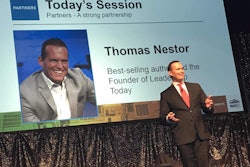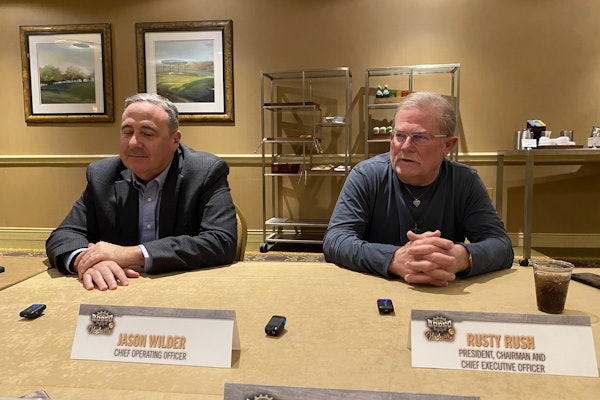When it comes to decision making, some people like to rely on their gut. Others are more analytical, evaluating data and using numbers to determine the best course of action when facing a difficult decision. Both options can lead to the right decision from time to time but, overall, when it comes to decision making, Thomas Nestor says the safest, smartest choice isn’t to rely solely on a spreadsheet or deep-rooted hunch.
Nestor says success in decision making is all about having a process.
Speaking Monday at the Commercial Vehicle Solutions Network (CVSN) Aftermarket Distribution Summit in Braselton, Ga., Nestor says process-driven decision making is more valuable in business than analytical decision making by a factor of six.
For example, while a spreadsheet is useful for demonstrating a new location may be financially feasible and a hunch may tell you a new store is something you can handle, until you evaluate such a choice under a process microscope, Nestor says you’re still making an educated guess.
Nestor outlines eight steps to a comprehensive process-driven decision-making strategy.
- Don’t limit your choices. This is one area process-driven thinking immediately outshines analytical decision making. Nestor says too often leaders treat decisions as binary choices and don’t take time to consider alternatives that may better fit their operation. Nestor says strong process decision making takes time to ignore Choice A and B and see if a Choice C or D exists.
- Split-test options. Nestor says split tests are useful because they allow decision makers to estimate how multiple options would be implemented. He adds when decision makers are able to create and examine enough options, tribal politics are lessened and employees are more likely to accept and gravitate toward an option that appears strongest.
- Look at other’s solutions. Nestor mentions the Walt Disney Company and Wal-Mart as two major corporations whose leaders were open about their willingness to duplicate strong business practices from other companies. He says decision making requires improvisation, and a willingness to accept new concepts that can turn a good idea into a great one.
- Build a case against your decision. This is Devil’s Advocate work, Nestor says, and something he learned from experience. If something sounds too good to be true, there might be a reason for that. Nestor says failing to challenge your decision leads to a confirmation bias where “we pretend we want the truth but what we really want is reassurance.”
- Reality test your idea. The second testing step in process decision making, Nestor says this requires a willingness to actually test a choice in the field. He uses a proficiency test for a potential employee as an example. Not every great interviewee becomes a great employee; a three-hour test can go a long way toward determining if the right candidate is the right hire.
- Shift your focus to the future. For this, Nestor mentions the 10-10-10 Rule. How would you feel about a decision ten minutes later? How about ten months or ten years? Short-term needs and emotions can hijack long-term decision making, he says, adding Observer’s Perspective can be helpful here — i.e., what would your replacement do if put in the same position?
- Identify your core priorities. Following the last step, Nestor says process-driven decision making also should include one’s long-term goals and priorities. A decision that passes each of the steps above may still be the wrong move if it takes you away from a specific retirement or corporate goal. You don’t want to take a step forward, then two steps sideways or back.
- Prepare to be wrong. Nestor says this should be considered throughout the decision-making process but especially at the end. Sometimes even the best evaluated options don’t work. Nestor says that’s okay. Process-driven decision making isn’t binary. If one option doesn’t work, there should always be a second or third choice on hand that might do the trick.










